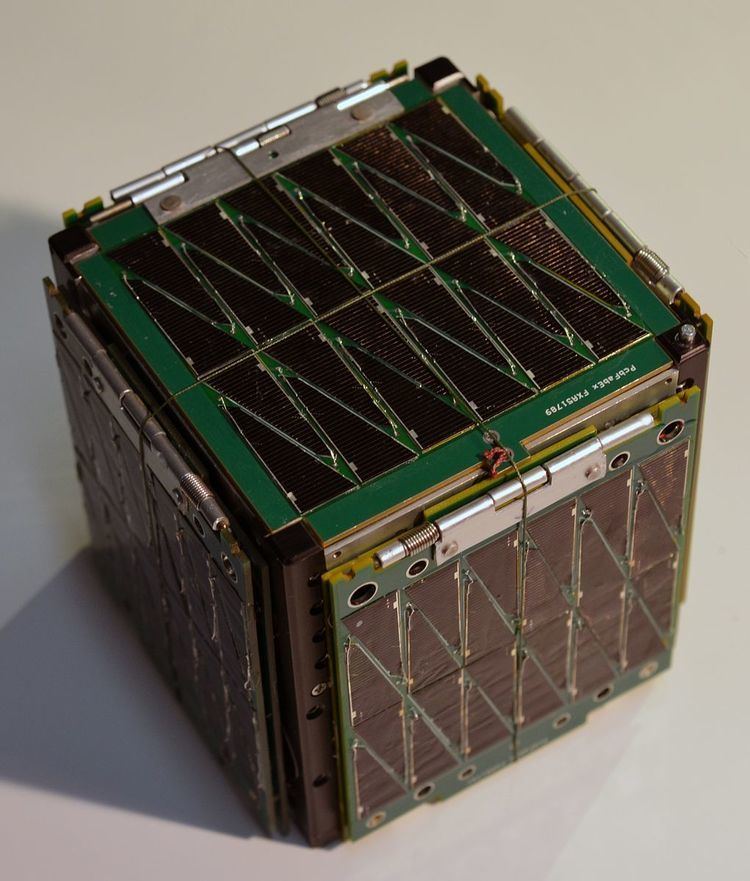Mission type Earth imaging Mission duration 90 days planned Launch mass 1.3 kilograms (2.9 lb) | Operator Southern Stars | |
 | ||
Launch date 9 January 2014, 18:07:05 (2014-01-09UTC18:07:05Z) UTC | ||
SkyCube was an American crowdsourced CubeSat. It was first announced on Kickstarter on 14 July 2012 and successfully funded on 12 September 2012, meeting its US$82,500 goal with a total of $116,890. It was developed and built in 2012–2013, completed flight integration at NanoRacks in late 2013, and finally launched aboard the Cygnus CRS Orb-1 flight at the Mid-Atlantic Regional Spaceport on Wallops Island, Virginia. SkyCube was deployed from the International Space Station on February 28, 2014. Contact with the satellite was last made on March 27, 2014. SkyCube re-entered the Earth's atmosphere on November 9, 2014.
Contents
Mission
SkyCube has three major mission components: the broadcast of messages from its radio, the capture of pictures from space via its three cameras, and the deployment of a large balloon.
Messages
The SkyCube radio emits periodic beaconing pings which contain 120-byte messages from the Kickstarter backers. These pings are transmitted at 915 MHz, using the AX.25 protocol at 9600 baud with BPSK modulation, with a callsign of WG9XMF.
Imaging
Using its three cameras, SkyCube will take pictures of the Earth from orbit. The cameras are VGA resolution and have lenses with three different fields of view (120°, 35°, and 6°), giving a variety of imaging possibilities. The images will be transmitted back to Earth at 57.6 kbit/s. Kickstarter backers will choose when the pictures are taken. NOAA granted a 90-day imaging license to SkyCube on 1 February 2013.
Balloon
SkyCube will deploy a large (2 metres (6.6 ft)) balloon at the end of its mission. The balloon is coated with reflective titanium dioxide and will make it visible from the ground. The balloon will also increase the atmospheric drag on SkyCube, and within two weeks the orbit will decay enough that SkyCube will enter Earth's atmosphere and burn up safely. The inflation is triggered via 4-gram CO2 canister.
Partnerships
SkyCube relies on several partners to provide necessary services:
